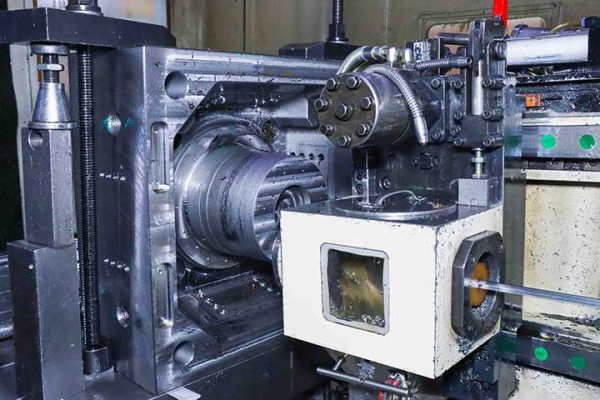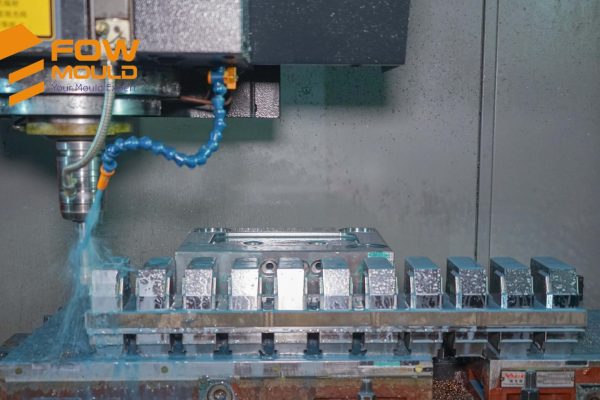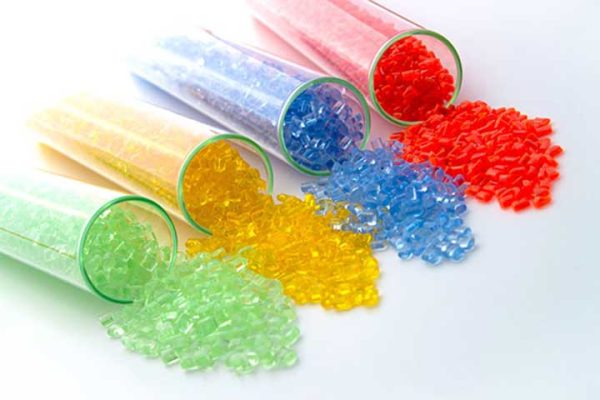Introduction Of Injection Moulding
Injection molding is an efficient method that completely changes the way plastic products are manufactured. This method involves injecting molten plastic material into a mold, followed by cooling and solidifying the material to create the desired shape. Due to its versatility and reliability, injection molding is highly suitable for mass production of products with different shapes, sizes, and complexities. With the continuous advancement of technology, injection molding has been widely applied in various industries such as automotive, medical, and consumer goods.

Composition Of Injection Molding Machine
An injection molding machine is composed of various components that work together to facilitate the injection molding process.
These components can be broadly categorized into three main sections: the injection unit, the clamping unit, and the control system.

Injection Unit
Hopper: responsible for storing plastic pellets for injection into the machine. The size and shape of the hopper need to be designed based on the type of plastic and injection volume.
Barrel: the core component of the injection molding machine, responsible for melting plastic pellets and injecting them into the mold. The barrel needs to maintain the appropriate temperature and pressure to ensure that the plastic can reach the ideal flowability and viscosity.
Reciprocating Screw or Plunger: This component is responsible for both melting the plastic pellets and injecting the molten plastic into the mold. It helps ensure consistent material flow and precise injection.
Nozzle: The nozzle is the component through which the molten plastic is injected into the mold. It is designed to provide a tight seal with the mold to prevent leakage during injection.
Clamping unit
Mold: The mold is the custom-made cavity that shapes the molten plastic into the desired part. It consists of the core and the cavity – that come together to form the complete shape of the part. It also be carefully designed to allow heat transfer to control the cooling process.
Clamping Mechanism: This mechanism is used to apply force to keep the mold halves tightly closed during the injection process. There are various types of clamping mechanisms, including hydraulic, mechanical, and electric.
Ejector System: The ejector system is used to remove the solidified part from the mold once it has cooled. It typically consists of ejector pins or a stripper plate that pushes the part out of the mold.
Control System
Human-Machine Interface (HMI): The HMI is the user interface through which operators can control and monitor the injection molding machine. It typically includes a touch screen or buttons and displays real-time information on the machine’s performance.
Programmable Logic Controller (PLC): The PLC is the brain of the injection molding machine, responsible for processing input data and controlling the machine’s components based on pre-programmed instructions.
Sensors and Actuators: Sensors monitor various parameters, such as temperature, pressure, and position, while actuators control components like the screw, clamping mechanism, and ejector system.
The Cycles Of The Injection Molding Process
Injection molding is a manufacturing process that is used to produce a wide range of plastic products. The process involves injecting molten plastic into a mold cavity. The molten plastic then cools and solidifies, taking the shape of the mold cavity. The entire process involves several distinct stages, which can be broken down into four stages in the cycles.

Clamping
Before injection molding, sufficient material must be injected into the mold and the two halves of the mold must be kept tightly closed during material injection. As the clamping unit closes the two halves of the mold, the machine injects the compound to ensure that the injected material fully fills the mold during the injection molding process. Then, the injection molding machine exerts sufficient force to keep the mold closed during material injection. Injection molding machines come in different sizes, and the time required for complete mold closure and clamping also varies. Generally, the larger the injection molding machine, the longer the time required for complete mold closure and clamping, which can ensure the quality and accuracy of injection molding.

Injection
During the injection stage of the injection molding process, the raw plastic material that is usually in pellet form is fed into the injection molding machine and advanced towards the mold by the injection unit.In this process, the material is melted by heat and pressure. Then, the melted plastic is quickly injected into the mold, and the accumulation and maintenance of pressure will package the material. The injection time depends on the type and size of the mold, as well as the composite material being injected. The injection pressure and injection rate are both controlled by the hydraulic system of the injection molding machine.

Cooling
Cooling begins inside the mold as soon as it makes contact with the interior mold surfaces.This is an important step in the injection molding process, involving internal cooling and cooling time. Once the molten plastic comes into contact with the interior surface of the mold, it begins to cool through the internal cooling process. As the plastic cools, it solidifies into the shape of the desired part. However, during the cooling process, some parts may experience shrinkage. Material filling during the injection phase allows for extra material to flow into the mold, reducing visible shrinkage. The mold must remain closed until the required cooling time has passed to ensure proper solidification and minimize defects.

Ejection
The last stage is ejection from the machine. This is done with an ejection system, where the cooled parts can be ejected from the mold using a pop-out system connected to the back half of the mold. When the mold is opened, the parts are pushed out of the mold using mechanical devices. Force must be applied to eject the parts, as they shrink and adhere to the mold during the cooling process. To facilitate the ejection of the parts, the mold cavity surface can be sprayed with mold release agent before injecting the molding material. After demolding, the mold can be clamped again to continue the injection molding process.
Auxiliary equipment required for
Injection molding process
After each injection molding cycle, auxiliary equipment also plays an important role.Indeed, auxiliary equipment plays a crucial role in the injection molding process, ensuring efficiency, consistency, and quality after each molding cycle. Some of the key auxiliary equipment used in the process includes:

Material handling systems:
These systems ensure the proper transportation, storage, and feeding of raw materials (usually in the form of pellets) to the injection molding machine. They can include hoppers, vacuum loaders, and conveying systems.
Material dryers:
Many plastic materials require drying before processing to remove moisture, as it can cause defects or processing issues. Desiccant dryers, hot air dryers, and vacuum dryers are commonly used to remove moisture from the plastic material before it enters the machine.
Temperature control units (TCUs):
TCUs regulate the temperature of the mold, ensuring optimal cooling and heating during the molding process. They maintain consistent temperatures, helping to minimize cycle times and improve part quality.
Granulators:
Granulators or grinders are used to recycle the plastic scrap produced during the molding process, such as runners, sprues, and rejected parts. By recycling this material, manufacturers can reduce waste and save on raw material costs.


Robots and automation:
Robotic systems can be used to automate tasks such as part removal, assembly, and packaging, increasing efficiency and reducing labor costs. Automation also ensures consistent handling of parts, which can lead to better quality control.
Mold maintenance equipment:
Equipment like ultrasonic mold cleaners, mold polishing tools, and mold temperature controllers help maintain the quality and longevity of molds, ensuring efficient production.
By incorporating these auxiliary equipment and systems into the injection molding process, manufacturers can optimize the overall production cycle, reduce waste, minimize downtime, and ensure consistent part quality.
Injection Moulding Considerations
Before injection molding, the following factors need to be considered:
Cost
Getting started with injection molding manufacturing can be expensive due to the high cost of purchasing injection molding machines and developing design molds.

Material selection
Different materials have different characteristics, such as hardness, strength, and wear resistance. It is very important to choose the appropriate raw materials according to the characteristics of the final product required.

Design factors
The design of molds not only needs to consider the shape and size of the product but also needs to consider production efficiency and cost. Minimizing the number of parts and simplifying the geometry of the item will make injection molding easier.

Production process
In the process of injection molding, it is necessary to control parameters such as temperature and pressure to ensure the quality of the product.

Advantages Of Injection Molding
Injection molding is an efficient production method that can meet your specific needs and has many advantages. It can expand production scale, enabling the production of more parts and thereby lowering the price per unit. In addition, injection molding has the following additional advantages:
Wide range of available materials
A wide variety of materials, including thermoplastics, thermosets and elastomers, can be used in the plastic injection molding process. This allows manufacturers to choose the most suitable material for the specific requirements of their products.
Low labor cost
Since the production process of injection molding is automated, it can greatly reduce operational errors and quality problems, thereby improving the quality stability of production. Therefore, while improving production efficiency, labor costs can be reduced.
High production rates
Injection molding production process is very fast, so it can produce a large number of parts, thereby improving production efficiency.Hot runner systems are an advanced injection molding technology used to improve the efficiency and quality of molded parts.
Minimal waste
The injection molding process generates minimal waste, as excess material can often be recycled and reused. This not only reduces material costs but also contributes to environmental sustainability.
High precision and repeatability
Injection molding is known for producing consistent and accurate parts. Due to the precision of the process, complex shapes and designs can be manufactured with great accuracy and consistency, ensuring that each part is virtually identical.
Conclusion
In summary, the injection molding process consists of four main cycles: clamping, injection, cooling, and ejection. Each of these stages plays a crucial role in the manufacturing of plastic products, and is repeated throughout the entire injection molding process to efficiently and accurately produce high-quality plastic products.
Choosing the right Chinese injection mold machine supplier has a significant impact on ensuring the quality of molds and the final product meets all requirements. FOWMOULD is a professional plastic injection mold manufacturer with 40 years of experience, capable of providing customers with a variety of customized services. If you are looking for a reliable injection molding machine supplier, FOWMOULD is your best choice.
